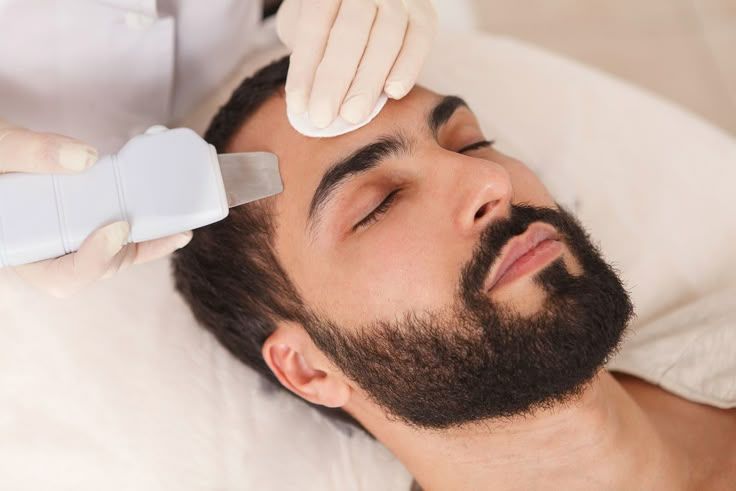Laser Treatments for Non-Surgical Facial Rejuvenation Benefits
Laser treatments for facial rejuvenation harness concentrated light energy to create controlled micro-injuries that remodel collagen and elastin, resulting in smoother lines, firmer tone, and an even complexion. This article explores five key themes: the core benefits of laser therapy, the main laser types and their uses, candidate selection criteria, the patient journey from procedure to recovery, and cost versus long-term value. Readers will gain actionable insights for selecting and maintaining non-surgical laser solutions.
What Are the Key Benefits of Laser Treatments for Facial Rejuvenation?
Laser therapy for facial rejuvenation delivers photothermal energy that achieves targeted collagen remodeling while removing damaged surface layers, producing firmer skin, reduced lines, and improved radiance.
Key Benefits of Laser Treatments
Laser treatments for facial rejuvenation deliver photothermal energy that achieves targeted collagen remodeling while removing damaged surface layers, producing firmer skin, reduced lines, and improved radiance.
This source provides context for the benefits of laser therapy, which is further explored in the article.
The following benefits illustrate how laser energy addresses common aging and damage signs:
- Wrinkle Reduction → Fine Lines → Smoother Complexion
- Collagen Stimulation → Neocollagenesis → Firmer Skin
- Pigmentation Correction → Sun Spots → Even Skin Tone
Together, these advantages lay the foundation for choosing the optimal laser modality to match individual skin goals and downtime preferences.
How Do Laser Treatments Reduce Wrinkles and Fine Lines?
Laser resurfacing reduces wrinkles by delivering focused thermal energy that breaks down aged collagen fibers and stimulates neocollagenesis, resulting in visibly smoother lines. Controlled ablation removes superficial irregularities while new collagen formation refines surface contours, setting the stage for deeper textural improvements.
In What Ways Do Lasers Stimulate Collagen and Improve Skin Texture?
Non-ablative lasers stimulate collagen through fractional photothermolysis, creating microthermal zones that activate dermal fibroblasts for enhanced structure and elasticity. Key collagen responses include:
- Fibroblast Activation → Structural Protein Synthesis
- Extracellular Matrix Remodeling → Improved Tone
- Enhanced Elastin Deposition → Resilient Skin
These texture improvements complement wrinkle smoothing by reinforcing skin strength from within.
How Effective Are Laser Treatments for Sun Damage and Pigmentation?
Lasers treat sun damage and hyperpigmentation by targeting melanin within epidermal lesions, fragmenting pigment clusters for natural clearance and uniform tone. Common applications include:
- Solar Lentigines (Sun Spots) → Lightening of age spots
- Melasma → Reduction of patchy discoloration
- Post-Inflammatory Hyperpigmentation → Smoother pigment distribution
By correcting pigment irregularities, lasers restore clarity and evenness that boost overall skin harmony.
Which Types of Laser Treatments Are Used for Non-Surgical Facial Rejuvenation?
Several laser platforms deliver distinct wavelengths and pulse durations optimized for specific skin concerns, from aggressive CO₂ resurfacing to gentle collagen-stimulating devices.
| Laser Type | Primary Purpose | Typical Downtime |
|---|---|---|
| CO₂ Laser | Ablative resurfacing for deep wrinkles and scars | 5–7 days |
| Fraxel Laser | Fractional remodeling for fine lines and scars | 3–5 days |
| Pulsed Dye Laser | Vascular lesion and redness reduction | 1–2 days |
| Laser Genesis | Non-ablative collagen stimulation and redness | Minimal |
Selecting the right system depends on balancing desired intensity with acceptable recovery.
What Are the Benefits and Uses of CO₂ Laser Resurfacing?
CO₂ laser resurfacing vaporizes microscopic skin layers to remove damaged tissue, promoting robust collagen remodeling for dramatic wrinkle smoothing. It excels in treating deep lines, severe textural irregularities, and recalcitrant acne scars, making it ideal for those prioritizing maximal rejuvenation over extended downtime.
How Does Fraxel Laser Treat Acne Scars and Wrinkles?
Fraxel utilizes fractional photothermolysis to deliver microbeam columns of energy that penetrate skin, triggering controlled healing processes that soften acne scars and diminish fine lines. Its balanced approach achieves significant improvement with moderate recovery, bridging aggressive and gentle options.
Fractional Laser Resurfacing for Acne Scars
Fractional laser resurfacing is both safe and effective for facial and nonfacial photodamage, atrophic acne scars, hypopigmented scars, and dyspigmentation. Most patients experienced a 30% to 70% improvement in the appearance of their scars.
This research supports the effectiveness of fractional lasers in treating acne scars, which is relevant to the article's discussion of laser treatments.
What Conditions Does Pulsed Dye Laser Address?
Pulsed Dye Laser emits a specific wavelength absorbed by hemoglobin to collapse vascular lesions and soothe redness associated with rosacea and broken capillaries. It effectively treats spider veins, port-wine stains, and facial erythema, restoring a calmer, more uniform appearance.
How Does Laser Genesis Provide Gentle Skin Rejuvenation?
Laser Genesis delivers sub-dermal heat to stimulate collagen gradually without ablating tissue, promoting subtle texture smoothing and overall redness reduction. It suits patients seeking minimal side effects and no downtime, treating mild laxity, fine lines, and diffuse erythema.
Laser Genesis for Skin Rejuvenation
Laser Genesis delivers sub-dermal heat to stimulate collagen gradually without ablating tissue, promoting subtle texture smoothing and overall redness reduction. An independent study from 2011 reported that 98% of test subjects were satisfied with their Laser Genesis results.
This source supports the article's description of Laser Genesis and its benefits for skin rejuvenation.
Who Is an Ideal Candidate for Laser Facial Rejuvenation Treatments?

Ideal candidates possess realistic aesthetic goals, stable health, and appropriate skin tones, ensuring safe and effective laser therapy outcomes.
Common candidate characteristics include:
- Fitzpatrick I–III Skin Types → Lower Pigment Risk
- Mild to Moderate Aging Signs → Balanced Results
- Absence of Active Acne or Infection → Enhanced Safety
Matching patient profiles to laser modalities maximizes benefits while minimizing complications.
What Skin Types and Conditions Benefit Most from Laser Therapy?
Light to medium skin tones respond best to most laser systems by minimizing pigmentary risks while accurately targeting wrinkles, scars, and redness. Early photoaging, mild rosacea, and superficial scars also achieve optimal outcomes with controlled energy delivery.
What Are the Common Contraindications and Precautions?
Contraindications include active skin infections, recent isotretinoin use, unrealistic expectations, and certain medical conditions that elevate the risk of adverse effects. Precautionary measures—such as sun avoidance and medication review—further enhance safety and efficacy.
What Should Patients Expect During and After Laser Facial Rejuvenation?

Patients undergo a structured journey from pre-treatment consultation and preparation to the procedure itself and post-care, ensuring predictable results and minimal complications.
Typical steps include:
- Consultation → Assessment of Skin and Goals
- Preparation → Topical Numbing and Cleansing
- Treatment → Calibrated Laser Passes
- Aftercare → Cooling, Soothing Serums, and Sun Protection
How Is a Typical Laser Treatment Procedure Performed?
A typical session begins with skin cleansing and topical anesthesia, followed by calibrated laser handpiece passes that deliver controlled energy to targeted zones. The provider concludes with cooling devices and application of reparative serums, ensuring comfort and comprehensive coverage.
What Is the Recovery Time and Possible Side Effects?
Recovery varies by laser aggressiveness, generally entailing redness, swelling, and mild crusting lasting from one to seven days. Rare risks include transient hyperpigmentation and infection, which prompt adherence to post-care guidelines for optimal healing.
Recovery Time After Laser Resurfacing
Recovery varies by laser aggressiveness, generally entailing redness, swelling, and mild crusting lasting from one to seven days. The recovery time after laser resurfacing varies depending on factors such as: Area treated, Depth of the treatment, Type of laser used, and Post-procedure care or routine.
This source supports the article's information on recovery time and possible side effects after laser treatments.
How Can Patients Maximize and Maintain Their Results?
Regular sunscreen use, gentle skincare routines, and periodic maintenance sessions sustain laser-induced collagen benefits while protecting skin from new damage. Consistent follow-up builds on initial gains and prolongs rejuvenation outcomes.
How Much Do Laser Treatments for Facial Rejuvenation Cost and Are They Worth It?
Treatment costs depend on laser modality, treatment area, session number, and provider expertise, but investment in laser therapy often yields long-term skin health improvements that justify the initial expense.
| Cost Factor | Description |
|---|---|
| Device Sophistication | Advanced platforms command higher per-session fees |
| Session Frequency | Multiple treatments increase cumulative investment |
| Geographic Location | Urban markets typically carry premium pricing |
| Practitioner Expertise | Board-certified specialists may charge premium rates |
What Factors Influence the Cost of Laser Facial Treatments?
Laser expenses fluctuate based on device complexity, number of sessions required to achieve desired outcomes, geographic location, and practitioner credentials, shaping the total investment. Patients should request customized quotes that reflect their unique treatment plans.
Factors Influencing Laser Hair Removal Costs
The cost of laser treatments depends on laser modality, treatment area, session number, and provider expertise. The type of laser used for your hair removal treatment can affect your treatment cost. Laser machines used for hair removal are typically imported and require precise technical calibration to ensure they operate safely and effectively.
This source provides information on the factors that influence the cost of laser treatments, which is relevant to the article's discussion of cost factors.
What Is the Long-Term Return on Investment for These Procedures?
Long-term ROI emerges from sustained skin quality, reduced reliance on cosmetic camouflage, and enhanced self-confidence, offsetting upfront costs over multiple years. Maintenance treatments and proper skincare further extend the value of initial laser sessions.
Substantial benefits across wrinkle reduction, collagen stimulation, pigmentation correction, and individualized treatment planning make laser therapies a cornerstone of non-surgical facial rejuvenation. By understanding each modality, candidacy criteria, procedural journey, and cost factors, patients can confidently pursue outcomes that enhance both skin health and appearance. Schedule a consultation with a board-certified professional to explore customized laser solutions tailored to your unique skin goals.
Our Recent News & Articles





